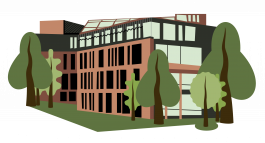Introduction to the Project
YongHong Chen
In recent years, the field of data visualisation has transcended traditional graphic expressions by incorporating elements of art and material. This shift is evident in both theoretical discussions and practical applications, with researchers and practitioners exploring new ways to convey complex information through visually and tactually engaging media. Gaviria (2008) emphasised the difference between functional and aesthetic forms of information visualisation, pointing out that functional visualisation prioritises clarity and performance, while aesthetic visualisation focuses on emotional appeal and visual appeal. This dichotomy challenges the traditional boundaries of data visualisation, suggesting that information data visualisation can benefit from incorporating artistic practices that emphasise subjective experiences and cultural contexts.
Knight (2018) offers further evidence of this trend. Her project Danger, Jane Roe! is a case study in material data visualisation. By combining embroidery with electronic components, Knight created a wearable data object that not only conveys information but also evokes an emotional response. Through the use of tactile and visual elements, the project illustrates the potential of feminist practice in data representation, and highlights the importance of embodied experience and subjectivity—elements often excluded from traditional visualisation methods, which typically prioritise objectivity and efficiency.
Drawing on insights from Gaviria and Knight, this project aims to propose a more inclusive, empathetic, and personalised approach to understanding and expressing data—one that allows for interpretive, tactile, and artistic engagement.
In the following chapters, this resource offers an alternative approach to data visualisation by guiding learners through the creation of a 3D-printed mini-loom. Using a weekly sample dataset which includes mood ratings, exercise, and sleep quality, abstract data is transformed into a physical, visual and tactile object. The woven patterns created with the loom represent not only the data itself but also serve as conceptual tools for exploring the metaphorical and material potential of data in digital arts, design, humanities, and data science education.
This guide provides clear and accessible instructions on how to use 3D printing to fabricate tools and convert datasets into tangible woven artefacts. It is designed as a self-contained resource for educators, students, and researchers looking to begin working in this field.
Keyword Index
#Data visualization, #3D printing, #novice 3D modeling, #data preparation, #data objectification, #data narrative research

